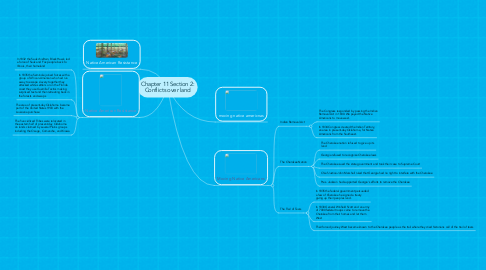
1. Native American Resistance
1.1. In 1832 the Sauk chieftain, Black Hawk, led a force of Sauk and Fox people back to Illinois, their homeland
1.2. In 1835 the Seminole joined forces with a group of African-American who had run away to escape slavery together they attacked white settlers or on the Florida coast they use Guerrilla Tactics making surprised text and then retreating back in the forests and swaps
1.3. The area of present-day Oklahoma became part of the United States 1903 with the Louisiana purchase
1.4. The five civilized Tribes were relocated in the eastern half of present-day Oklahoma on lands claimed by several Plains groups including the Osage, Comanche, and Kiowa
2. Native American Resistance
3. moving native americnas
4. Moving Native Americans
4.1. Indian Removal Act
4.1.1. The Congress responded by passing the Indian Removal Act in 1830. We payed the Native Americans to move west.
4.1.2. In 1834 Congress created the Indian Territory, an area in present-day Oklahoma, for Native Americans from the Southeast.
4.2. The Cherokee Nation
4.2.1. The Cherokee nation refused to give up its land
4.2.2. Georgia refused to recognize Cherokee laws
4.2.3. The Cherokee sued the state government and took their case to Supreme Court
4.2.4. Chief Justice John Marshall ruled that Georgia had no right to interfere with the Cherokee
4.2.5. Pres. Jackson had supported Georgia's efforts to remove the Cherokee
4.3. The Trail of Tears
4.3.1. In 1835 the federal government persuaded a few of Cherokee he signed a treaty giving up their peoples land.
4.3.2. In 1830 General Winfield Scott and an army of 7000 federal troops came to remove the Cherokee from their homes and let them West
4.3.3. Their forced journey West became known to the Cherokee people as the trail where they cried historians call of the trail of tears

